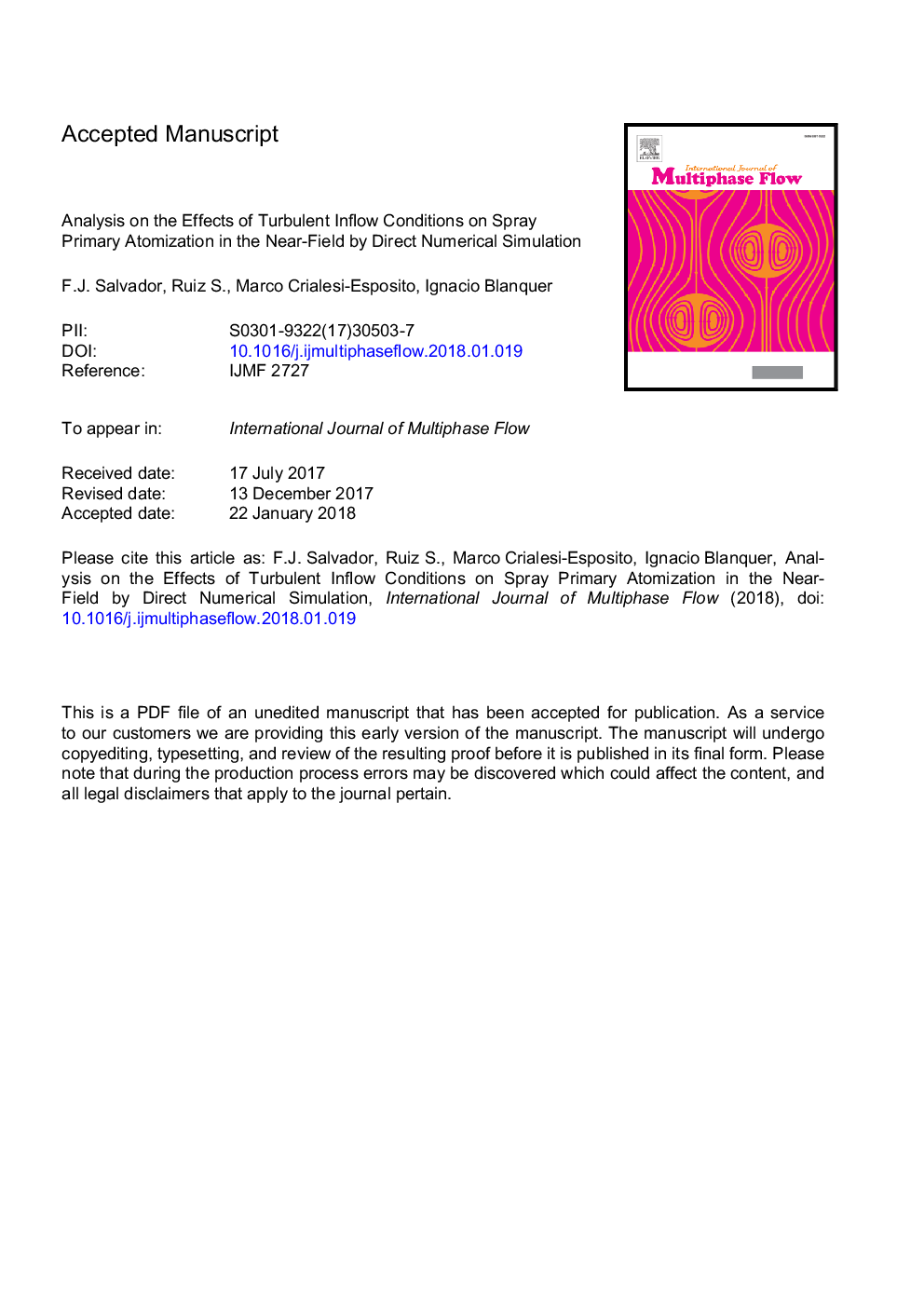| Article ID | Journal | Published Year | Pages | File Type |
|---|---|---|---|---|
| 7060130 | International Journal of Multiphase Flow | 2018 | 28 Pages |
Abstract
It is widely acknowledged that the development of sprays in the near-field is of primary importance for the spray formation downstream, as it affects both the spray angle, as well as the intact core length. In this frame, the present work aims to study the effects of turbulence inlet boundary condition on the spray formation by means of Direct Numerical Simulations on a real condition at low Reynolds number. To this extent, the code Paris-Simulator has been used, while a digital filter-based algorithm was used in order to generate synthetic turbulence at the inlet boundary condition. The influence of turbulence intensity and lengthscale on the atomization process has been studied and analyzed through 3 simulation for which these parameters have been varied. The results clearly highlight how the atomization is heavily affected by the inlet turbulence configuration. An analysis of the different atomizing conditions has been conducted, aiming to understand how the variation introduced by the inlet boundary condition on the velocity field is affecting the local atomization dynamics.
Keywords
Related Topics
Physical Sciences and Engineering
Chemical Engineering
Fluid Flow and Transfer Processes
Authors
F.J. Salvador, Ruiz S., Marco Crialesi-Esposito, Ignacio Blanquer,
